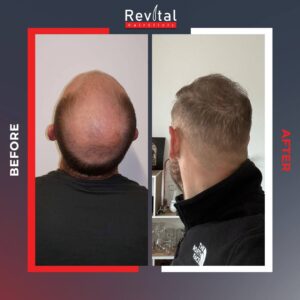What is FUE Hair Transplantation?
Hair loss is a common issue that affects millions of people worldwide, regardless of age or gender. Whether it’s caused by genetics, hormonal changes, or other factors, hair loss can impact one’s confidence and self-esteem. Thankfully, modern medical advancements have made it possible to restore lost hair through techniques like FUE (Follicular Unit Extraction). FUE is considered one of the most advanced, minimally invasive methods for hair restoration, offering natural-looking results with minimal downtime.
In this article, we’ll explore what FUE hair transplantation is, how it works, and why it’s one of the most popular choices for individuals seeking hair restoration.
What is FUE Hair Transplantation?
FUE (Follicular Unit Extraction) is a modern hair transplant technique that involves the removal of individual hair follicles from a donor area (usually the back or sides of the scalp) and transplanting them into areas experiencing hair thinning or baldness (the recipient area). Unlike older methods such as FUT (Follicular Unit Transplantation), which requires the removal of a strip of scalp tissue, FUE focuses on extracting follicles one by one, leaving minimal scarring and providing a more natural appearance.
The hair follicles extracted during the FUE procedure are genetically resistant to hair loss, meaning they continue to grow naturally in the new location. This results in a permanent solution to hair loss, as the transplanted hair continues to grow for the rest of the individual’s life.
How Does FUE Hair Transplantation Work?
The FUE hair transplantation process involves several steps, each designed to ensure a smooth, efficient procedure with excellent results:
- Consultation and Planning: The process begins with an initial consultation, during which the surgeon evaluates the extent of hair loss and assesses the condition of the donor area. Based on the patient’s needs and goals, a personalized hair restoration plan is created. The surgeon will also discuss the design of the new hairline, ensuring it suits the patient’s face and looks natural.
- Preparation for the Procedure: On the day of the surgery, the patient’s scalp is numbed using local anesthesia to prevent pain during the procedure. The donor area is carefully trimmed or shaved to facilitate the extraction of the hair follicles. The recipient area is also marked with a design that outlines the new hairline.
- Follicular Unit Extraction: During the FUE procedure, the surgeon uses a specialized punch tool (typically 0.7mm to 1mm in diameter) to extract individual hair follicles from the donor area. These tiny circular incisions around the follicle allow for its extraction without damaging surrounding tissue. The extracted follicles are then stored in a nutrient-rich solution to keep them viable.
- Follicle Implantation: Once the follicles have been harvested, they are carefully implanted into the recipient area. The surgeon creates small incisions in the recipient area to insert the follicles at the right angle and direction for a natural look. This step is critical to ensuring the new hairline and hair growth patterns blend seamlessly with the existing hair.
- Post-Operative Care: After the procedure, the surgeon will provide specific post-operative instructions, such as how to care for the scalp, how to wash the hair, and how to avoid activities that may interfere with healing. There is usually a minimal recovery time, with patients typically able to return to regular activities within a few days.
Advantages of FUE Hair Transplantation
FUE has become one of the most popular hair transplant methods due to its numerous advantages:
- Minimally Invasive: Unlike traditional hair transplant methods, FUE does not require the removal of a large strip of scalp tissue, making it a minimally invasive procedure. This reduces the risk of scarring and promotes quicker healing.
- Natural-Looking Results: Since each follicle is transplanted individually, FUE allows for precise control over the hairline design, ensuring that the results blend seamlessly with the patient’s natural hair growth.
- No Linear Scarring: FUE leaves small, dot-like scars that are virtually undetectable, even when the hair is cut short. This is in contrast to the linear scar left by FUT, which can be visible even with longer hair.
- Faster Recovery: Because FUE is less invasive, the recovery time is significantly shorter than with traditional methods. Most patients experience minimal discomfort and can return to their normal activities within a few days.
- Permanent Results: The transplanted hair follicles are taken from areas that are genetically resistant to hair loss, ensuring that the new hair grows naturally and permanently.
Who Is a Good Candidate for FUE Hair Transplantation?
FUE is suitable for most individuals experiencing hair loss, whether due to genetics, aging, hormonal changes, or scalp injuries. Some key factors that make someone a good candidate for FUE include:
- Adequate Donor Hair: The donor area must have enough healthy hair follicles to be harvested. The donor hair is typically taken from the back or sides of the scalp, as these areas are genetically resistant to hair loss.
- Stable Hair Loss: The best candidates for FUE are individuals whose hair loss has stabilized, meaning the pattern of hair loss is not rapidly progressing.
- Good Overall Health: Individuals in good overall health with no major medical conditions are the best candidates for this procedure.
During a consultation with a hair transplant specialist, they will assess your specific condition to determine if FUE is right for you.
Why Choose FUE Hair Transplantation?
FUE offers several advantages over other methods of hair restoration, making it a top choice for many individuals:
- Precision and Customization: FUE allows for meticulous follicle extraction and careful placement, ensuring that the new hairline fits naturally with the patient’s existing hair and facial features.
- Minimal Scarring: The small, dot-like scars left by FUE are almost invisible, even when the hair is shaved short.
- Less Downtime: Since FUE is minimally invasive, patients experience less pain, swelling, and recovery time compared to other methods.
- Long-Lasting Results: Once the transplanted follicles have settled and begun growing hair, the results are permanent and provide a natural look that lasts a lifetime.
⚕️ Consultation and Next Steps
If you’re considering a hair transplant, FUE offers a highly effective and minimally invasive solution to restore your hair. The best way to determine if FUE is right for you is to consult with a qualified hair transplant specialist. They will evaluate your individual needs and goals to create a personalized treatment plan.
At Revital Hair Clinic, we specialize in FUE hair transplantation and are committed to helping you achieve your hair restoration goals with the latest techniques and expert care.
Contact us today to schedule a consultation and take the first step towards a fuller, healthier head of hair!
Revital Hair Clinic © 2024












Leave a Reply